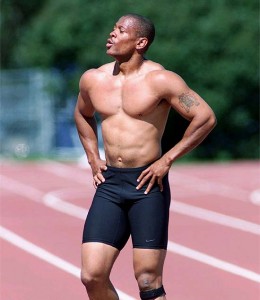You’ve seen claims like this before: this is one exercise you HAVE to be doing. There’s a good chance that you actually started doing it too because, well, you have to. But realistically, there are few exercises that HAVE to be done—especially when dealing with athletics. An olympic weightlifter has to clean & jerk and [...]
You’ve seen claims like this before: this is one exercise you HAVE to be doing. There’s a good chance that you actually started doing it too because, well, you have to.
But realistically, there are few exercises that HAVE to be done—especially when dealing with athletics. An olympic weightlifter has to clean & jerk and snatch. A powerlifter has to squat, bench press, and deadlift. But in soccer, the only thing a midfielder has to do is run, control the soccer ball, and kick the soccer ball. There’s nothing in that job description that also says, “must back squat.”
So the next time you hear, “this is one exercise you HAVE to be doing,” put it into context. If we’re talking about an exercise that implies getting jacked or healthy, then it may have some merit. It’s possible that there are some exercises out there better than the rest for getting your biceps to bulge from your arm. From a flexibility standpoint, for instance, the quad-hip flexor combination stretch—seen at the end of this article—is a must (in my opinion).
But when we talk about exercises for athletic purposes, it gets fuzzy. Arguments can start about what exercise is the best overall, let alone good in general. So it goes from “one exercise you HAVE to be doing,” to “this is the BEST exercise, period.”
This is usually where the dogmatic view of training appears, and usually—although not always—the powerlifting and olympic weightlifting methods intermingle with athletic preparation. Where the guy that trains solo reads about all of these special methods on the internet and begins to implement them into his training to take him the next level. So then we have guys that can’t do one pull-up, can’t squat their own body weight, and yet are doing dynamic effort box squats with 50% 1RM, which probably looks like a seizure with two nickels on the bar.
Don’t get me wrong. All exercise techniques and methods, at some point, have uses. (Well, most, I should say to protect myself from this.) But when it comes to a sport that doesn’t involve barbells, there isn’t One Ring to rule them all.

To better understand why, you have to take a look back at this continuum: general | general-specific | specific. James Smith in, Classification of the Means, does a better job explaining this than I ever could, so check out the article here. But James also tends to sound confusing, so let me translate it for you.
First, understand that this classification system is premised around skills. Every skill needs to be classified differently, and every sport is a combination of different skills. Baseball, for example, is a combination of throwing and catching. But since catching is usually developed throughout the life span, I’ll use the example of throwing, specifically with the position of a pitcher.
General exercises are those exercises that indirectly help in the execution of a movement. Nowhere in a pitch does a pitcher squat with a barbell on their back, yet squats can be used to improve leg strength which can then help someone throw harder. Most anything that can be done with a barbell, or in the weight room, for team sport athletes is general training.
General-specific exercises are the mid-ground. They kind of resemble the skill in question but they don’t quite match up enough to be considered directly specific. For a pitcher, these are things like throwing from the knees or rotational medicine ball throws.
Specific exercises are pretty damn close to being the actual movement, but with slight tweaks. For example: pitching with a slightly weighted ball or a session of long toss (throwing farther than you would during the game, pitching from further than 60′ 6″ away from home plate).
In any sport, the best athletes are the ones that have highly developed specific physical preparedness (SPP). Yet, ironically enough, all most of us care about are the general exercises that develop general physical preparedness (GPP). That’s not to say, however, that GPP is useless—because it isn’t—but rather that you need to focus on both for best results. You can’t rely on your general capacity to carry you through a skilled activity.
So the next time someone tells you that there is one exercise you HAVE to be doing in relation to a skill, there’s a good chance it isn’t true. And it’s exactly why we see high level athletes training their general capacities like shit—what James called “abortions”—and yet still somehow prosper. Their SPP is developed enough that it covers for their lack of GPP.

